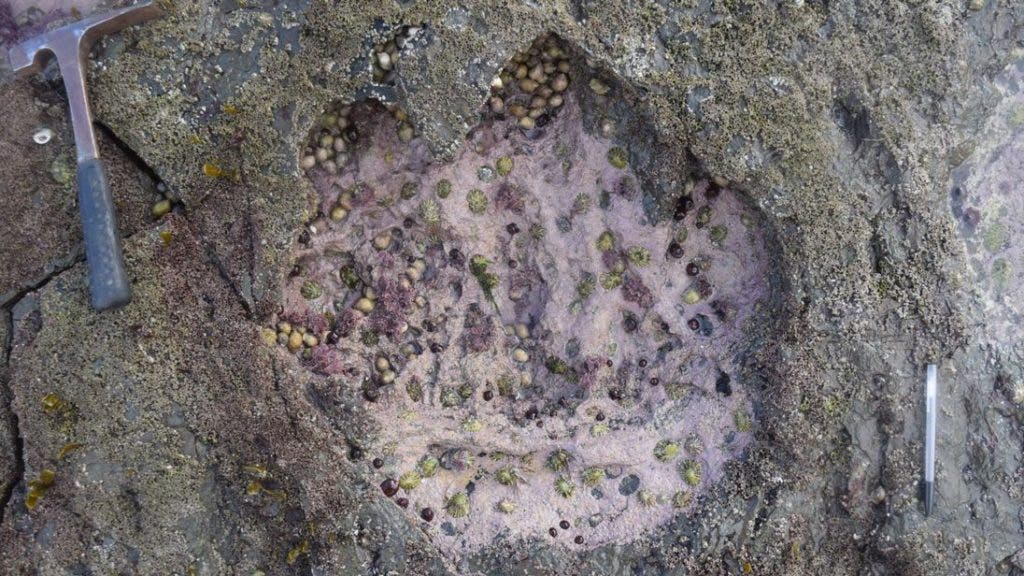Around 170 million years ago, a group of long-necked sauropods was taking a stroll along a muddy, shallow lagoon in what is now the north-east coast of the Isle of Skye. Using a mixture of modern techniques and good old-fashioned paleontology, researchers have now found and analyzed these footprints, gaining new insight into this ancient period.

Lying just off the coast of Scotland, the Isle of Skye has been inhabited since the Mesolithic period, and its rich history includes a time of Norse rule and a long period of domination by the legendary Clan MacLeod. But before that (way before that), it was a coastal lagoon inhabited by several species of dinosaur.
Researchers from the University of Edinburgh, Staffin Museum, and Chinese Academy of Sciences found 50 footprints in a tidal area at Brothers’ Point, in one of Skye’s numerous small peninsulae. In addition to numerous isolated footprints, researchers identified two pathways which feature footprints from both sauropods and therapods (older cousins of Tyrannosaurus Rex).

The finding is particularly significant since the footprints have been dated to the mid-Jurassic. Middle Jurassic dinosaur fossils “are exceedingly rare, but new discoveries from the Isle of Skye, Scotland, are beginning to fill this gap,” researchers write. Paige dePolo, who led the study, commented:
“This tracksite is the second discovery of sauropod footprints on Skye. It was found in rocks that were slightly older than those previously found at Duntulm on the island and demonstrates the presence of sauropods in this part of the world through a longer timescale than previously known. This site is a useful building block for us to continue fleshing out a picture of what dinosaurs were like on Skye in the Middle Jurassic.”
Studying Skye isn’t easy — the site’s location in a tidal area made the task extremely difficult. Researchers had to use drone photographs to create a map of the site, in addition to a paired set of cameras and tailored software they used to model the tracks. This allowed the team to assess the shape and orientation of the toes, as well as the presence of claws
But it was well worth it. Skye has already yielded a trove of valuable findings and Dr. Steve Brusatte, of the University of Edinburgh’s School of GeoSciences, who led the field team, says there might be even more in store.
“The more we look on the Isle of Skye, the more dinosaur footprints we find. This new site records two different types of dinosaurs — long-necked cousins of Brontosaurus and sharp-toothed cousins of T. rex — hanging around a shallow lagoon, back when Scotland was much warmer and dinosaurs were beginning their march to global dominance,” said Brusatte.
Journal Reference: dePolo et al. A sauropod-dominated tracksite from Rubha nam Brathairean (Brothers’ Point), Isle of Skye, Scotland. https://doi.org/10.1144/sjg2017-016


